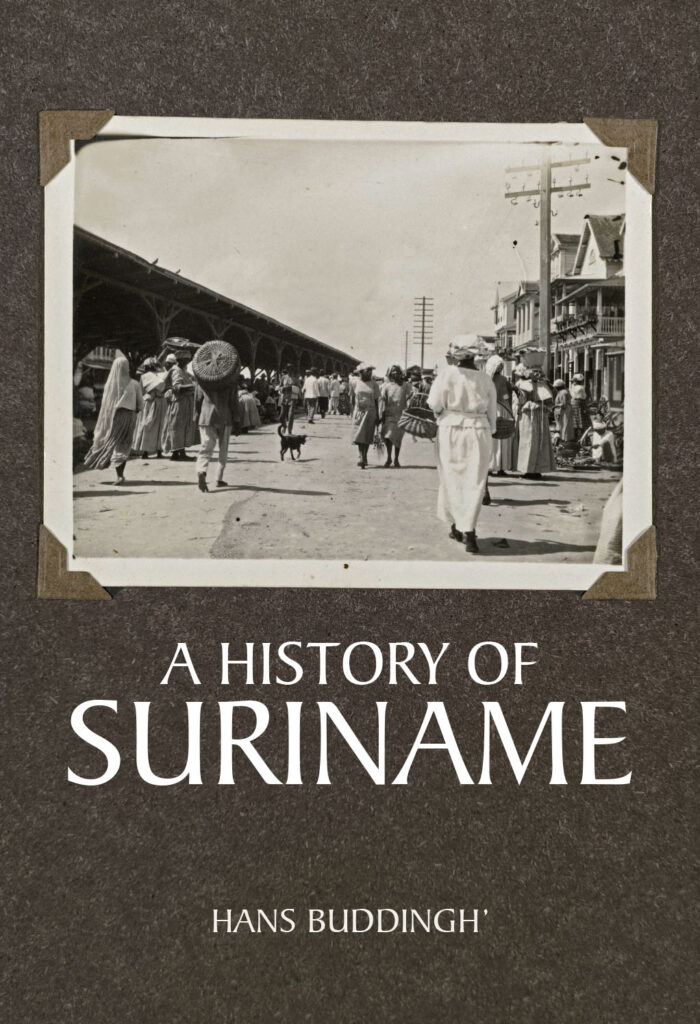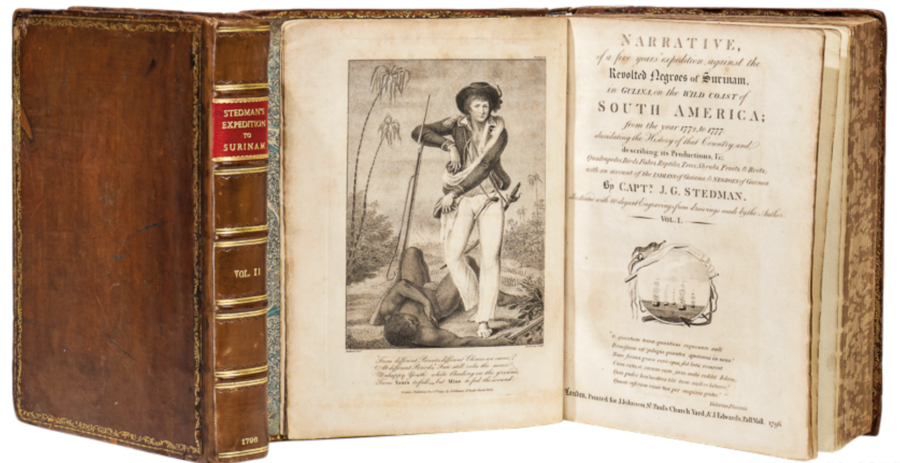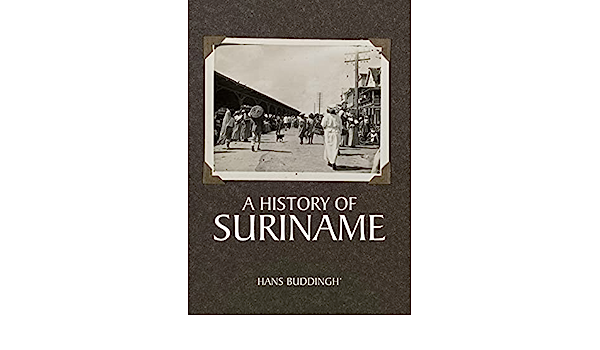Hey there! Have you ever wondered about the Golden Age of Suriname? It’s a fascinating period in the history of this small South American country, and we’re going to dive into it in this article.
During the Golden Age of Suriname, which spanned from the late 17th century to the early 18th century, the country experienced significant economic and cultural growth. Suriname was a Dutch colony at the time, and its lucrative plantations, particularly in sugar, coffee, and cocoa, were highly productive and profitable. These plantations relied heavily on enslaved Africans for labor, and this unfortunate aspect of the Golden Age cannot be ignored.
However, it’s important to note that the Golden Age of Suriname was not just about economic prosperity. Suriname also saw a flourishing of the arts, with artists and musicians producing beautiful works that showcased the country’s diverse cultural heritage. Additionally, Suriname played a key role in international commerce, serving as a trading hub for goods between Europe, Asia, and the Americas.
In this article, we’ll delve deeper into the specific events and developments that contributed to the Golden Age of Suriname. From the establishment of the Dutch West India Company to the rise and fall of the plantation economy, we’ll explore the key factors that shaped this golden era. So, stay tuned for a fascinating journey through Suriname’s past!

Origins of Suriname
Suriname, a small country located on the northeastern coast of South America, has a rich and complex history that can be traced back to its origins. The land that is now Suriname was once inhabited by indigenous tribes, including the Arawaks and Caribs. These indigenous peoples lived off the land, practicing agriculture, hunting, and fishing to sustain their communities.
Early settlement of indigenous peoples
The indigenous peoples of Suriname lived in harmony with nature, relying on the abundance of resources that the land and rivers provided. They developed sophisticated agricultural techniques, such as slash-and-burn farming, to cultivate crops such as maize, cassava, and tobacco. The indigenous peoples also had complex social structures, with tribal chiefs and shamans playing important roles in their communities.

Arrival of European explorers and colonization
In the late 15th century, European explorers began venturing into the Atlantic Ocean in search of new trade routes and lands to colonize. Suriname, with its lush vegetation and vast natural resources, caught the attention of these explorers. The first European to set foot on Surinamese soil was Christopher Columbus in 1498, during his third voyage to the New World.
However, it was not until the early 17th century that the Dutch began establishing colonies in Suriname. In 1651, the Dutch established a small settlement called Fort Willoughby on the Suriname River, which would later become Paramaribo, the capital city of Suriname. The Dutch were primarily interested in the vast wealth of natural resources, including fertile soil for plantation agriculture.
Colonization and Plantation Economy
Establishment of Dutch colonies
The Dutch quickly expanded their presence in Suriname by establishing more colonies along the coast. These colonies became centers of trade and commerce, attracting merchants and entrepreneurs from Europe. The Dutch West India Company, a trading company established by the Dutch government, played a significant role in Suriname’s colonization, overseeing the establishment and administration of the colonies.
Introduction of plantation system and slave labor
To exploit the natural resources of Suriname, the Dutch introduced the plantation system, which relied heavily on slave labor. African slaves were forcibly brought to Suriname from West Africa to work on the plantations. They were subjected to inhumane conditions, enduring backbreaking labor and harsh treatment from their Dutch masters.
The boom in sugar, coffee, and cocoa production
Under Dutch rule, Suriname experienced a boom in the production of crops such as sugar, coffee, and cocoa. The fertile soil and favorable climate of Suriname made it an ideal location for plantation agriculture. The Dutch planters amassed great wealth from these cash crops, exporting them to Europe and other colonies.

Suriname under Dutch Rule
Economic and political dominance of the Dutch
During the 17th and 18th centuries, Suriname was under the economic and political dominance of the Dutch. The Dutch planters controlled the majority of the land and resources, while the enslaved Africans endured unimaginable suffering and exploitation. The Dutch government implemented strict regulations to maintain control over the colony and protect the interests of the planters.
Expansion of plantations and increased slave trade
As the demand for agricultural products grew, the Dutch planters expanded their plantations, clearing vast areas of land and displacing the indigenous peoples. The need for more labor led to an increase in the transatlantic slave trade, with thousands of Africans being brought to Suriname to work on the plantations. The slave trade had a profound impact on the demographic makeup of Suriname, with the majority of the population being of African descent.
Impact of the Treaty of Breda
In 1667, the Treaty of Breda was signed between the Dutch and the English, which resulted in the exchange of colonies. Suriname, then known as Dutch Guiana, was ceded to the Dutch in exchange for the English-controlled territory of New Amsterdam, which would later become New York. This marked the beginning of a long-standing rivalry between the English and the Dutch for control over Suriname.
The Rivalry with the English
English attempts to seize Suriname
Despite the Dutch being granted ownership of Suriname, the English were determined to seize control of the prosperous colony. In the 18th century, the English made several attempts to capture Suriname, launching military expeditions and inciting rebellions among the slaves. However, the Dutch successfully defended their colony, maintaining their hold on Suriname.
Anglo-Dutch Wars and shifting control
The rivalry between the English and the Dutch over Suriname continued throughout the 17th and 18th centuries, resulting in several wars known as the Anglo-Dutch Wars. These wars saw control of Suriname shift back and forth between the English and the Dutch, with each side striving to gain dominance over the lucrative plantation economy.

The Abolition of Slavery
Effects of the abolition movement
In the late 18th century, the abolitionist movement gained momentum in Europe and the Americas, with growing opposition to the institution of slavery. This led to increased pressure on the Dutch government to abolish slavery in Suriname. The voices of abolitionists and the rising consciousness of human rights eventually led to the abolition of slavery in Suriname in 1863.
Impact on Suriname’s economy and society
The abolition of slavery had a profound impact on Suriname’s economy and society. With the loss of their enslaved workforce, the Dutch planters faced immense challenges in maintaining profitability. Many plantations went bankrupt, and the Dutch government was forced to implement new labor systems, such as indentured labor, to sustain the plantation economy.
Cultural Integration and Diversity
Influence of African, Indigenous, and European cultures
Over the centuries, Suriname became a melting pot of cultures, with influences from African, Indigenous, and European traditions. The African slaves brought with them their rich cultural heritage, which manifested in various forms such as music, dance, and religious practices. The Indigenous peoples also contributed to the cultural diversity of Suriname, with their traditional knowledge and customs.
Formation of Surinamese Creole language
The interaction between these different cultural groups gave rise to a unique language known as Surinamese Creole. This language, which combines elements of Dutch, English, Portuguese, and African languages, became the lingua franca of Suriname, bridging the gap between different ethnic groups and playing a vital role in the cultural integration of the country.

The Golden Age of Agriculture
Diversification of agricultural products
Following the abolition of slavery, Suriname underwent a period of transformation in its agricultural industry. The loss of slave labor necessitated a shift in the focus of agricultural production. Planters began diversifying their crops, cultivating products such as bananas, cacao, and rice. This diversification allowed Suriname to explore new markets and reduce its dependence on a single cash crop economy.
Introduction of Chinese and Indian indentured laborers
To meet the labor demands of the post-abolition era, the Dutch government introduced a system of indentured labor, similar to the one previously employed with enslaved Africans. Chinese and Indian workers were brought to Suriname to work on the plantations, bringing with them their own cultural traditions and culinary practices. This influx of immigrants played a significant role in shaping the cultural landscape of Suriname.
Emergence of Nationalism
Rise of political consciousness and independence movements
As the 20th century dawned, Suriname witnessed the rise of political consciousness among its people. Influenced by nationalist movements across the world, Surinamese intellectuals and activists began calling for self-governance and independence from Dutch rule. Anton de Kom, a prominent Surinamese nationalist, played a crucial role in advocating for the rights of the Surinamese people and challenging Dutch colonialism.
Role of Anton de Kom and the Surinamese nationalist movement
Anton de Kom, a writer and activist of African and Indigenous descent, emerged as a leading figure in the Surinamese nationalist movement. His writings and speeches exposed the injustices of Dutch colonial rule and called for a united Suriname free from the shackles of foreign domination. De Kom’s activism laid the foundation for the eventual decolonization of Suriname.
The Decolonization Process
Negotiations for independence from the Netherlands
Following World War II, the decolonization movement swept across the world, and Suriname was no exception. The Surinamese people’s demand for self-rule grew louder, forcing the Dutch government to enter into negotiations for Suriname’s independence. After years of talks and preparations, Suriname gained its independence from the Netherlands on November 25, 1975, becoming the Republic of Suriname.
Establishment of the Republic of Suriname
The establishment of the Republic of Suriname marked a significant turning point in the country’s history. Suriname became a sovereign nation, responsible for its own governance and future. However, the young nation faced numerous challenges in building a stable political system, revitalizing its economy, and fostering social cohesion among its diverse population.
Economic Challenges and Political Instability
Post-independence economic struggles
The years following independence were fraught with economic challenges for Suriname. The transition from a Dutch colony to an independent nation was not without its setbacks. Suriname’s economy heavily depended on revenues from the export of commodities, such as bauxite and oil. However, global market fluctuations and mismanagement of resources led to economic instability and a decline in living standards for many Surinamese.
Political instability and military coups
Alongside economic challenges, Suriname experienced political instability in the years following independence. The country faced a series of military coups, with the military assuming control of the government on multiple occasions. The period of military rule was marked by human rights abuses and political repression, further exacerbating the social and economic struggles faced by the Surinamese people.
Modern Suriname and Cultural Heritage
Preservation of Surinamese cultural traditions
Despite the challenges faced by modern Suriname, the country has made significant efforts to preserve its cultural heritage. Surinamese people, proud of their diverse backgrounds, actively engage in cultural activities such as music, dance, and traditional cuisine. Cultural festivals, such as the Suriname Day Festival and the Maroon Festival, celebrate the nation’s rich history and traditions.
Contributions to music, art, and literature
Suriname has also made significant contributions to the world of music, art, and literature. Musicians like Max Nijman and Lieve Hugo have gained international recognition for their unique blend of Surinamese and Western influences. Artists such as Marcel Pinas have used their work to shed light on issues of identity and cultural heritage. Surinamese writers, including Cynthia McLeod and Astrid Roemer, have achieved literary acclaim, exploring themes of post-colonialism and cultural identity.
Environmental Conservation Efforts
Protection of Suriname’s diverse ecosystems
Suriname is renowned for its breathtaking natural beauty and diverse ecosystems. The country is home to vast rainforests, pristine rivers, and a wealth of plant and animal species. Recognizing the importance of these natural resources, Suriname has implemented various conservation measures to protect its environment. The Central Suriname Nature Reserve, a UNESCO World Heritage site, safeguards a significant portion of the country’s pristine rainforest.
Role of nature reserves and sustainable development
In recent years, Suriname has embraced the concept of sustainable development, seeking to balance economic progress with environmental conservation. The establishment of nature reserves and the promotion of sustainable practices in industries such as mining and logging have played a pivotal role in preserving Suriname’s natural heritage for future generations.
International Relations and Diplomacy
Suriname’s role in regional and global organizations
As an independent nation, Suriname actively participates in regional and global organizations. Suriname is a member of the Caribbean Community (CARICOM), an organization that promotes cooperation among Caribbean countries. The country also holds observer status in various international organizations, including the United Nations (UN).
Diplomatic ties with other countries
Suriname has established diplomatic ties with numerous countries around the world. The country maintains close relations with its Caribbean neighbors and has strong ties with former colonial powers such as the Netherlands. Suriname also seeks to cultivate relationships with emerging powers, including China and India, in order to diversify its diplomatic and economic partnerships.
Conclusion
The golden age of Suriname is a complex and multifaceted period in the country’s history that encompasses exploration, colonization, slavery, and independence. From its early settlement by indigenous peoples to its struggles for independence and beyond, Suriname has faced numerous challenges while preserving its cultural heritage and natural environment. Suriname’s rich history, diverse culture, and ongoing commitment to sustainable development make it an intriguing and resilient nation with a bright future ahead.